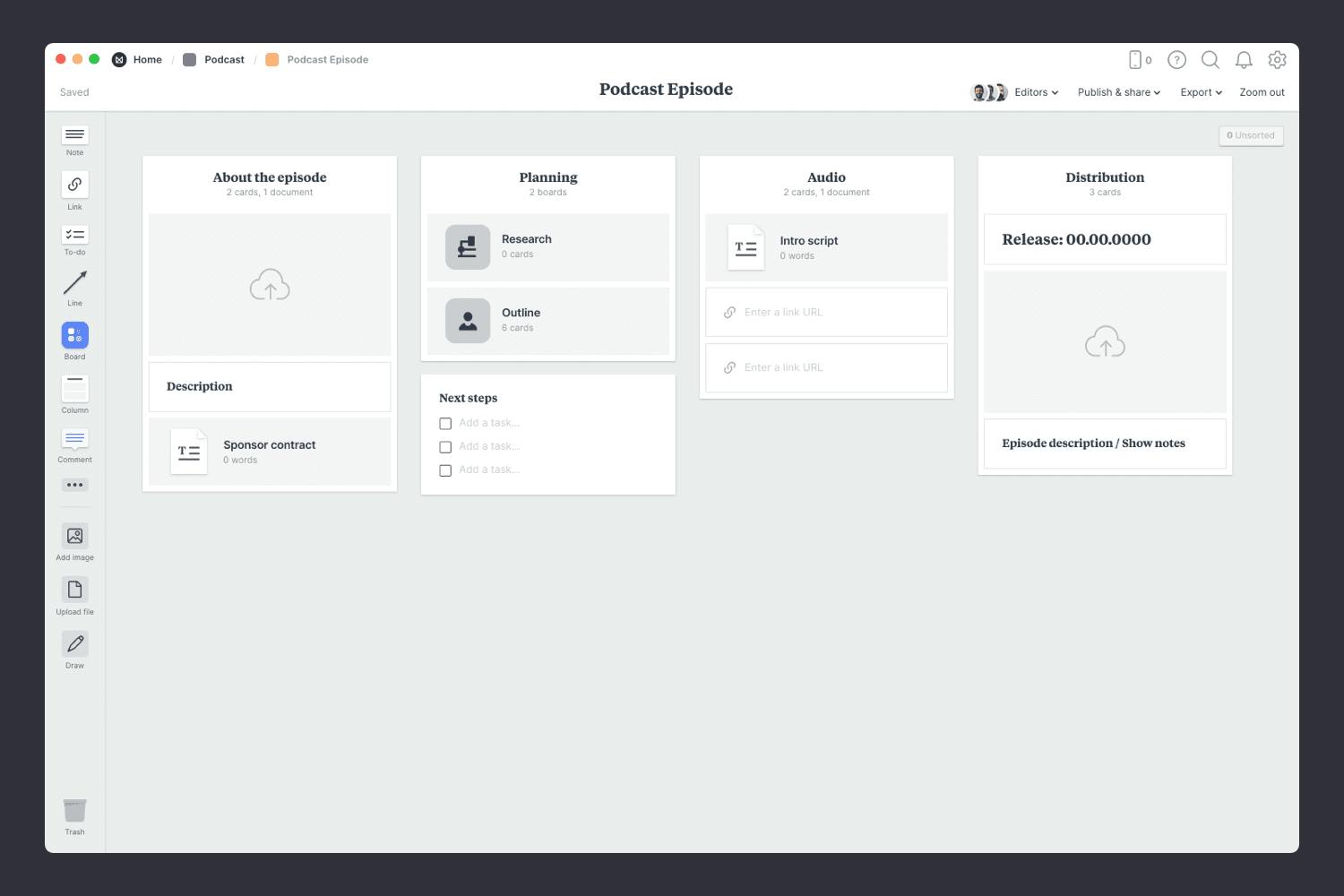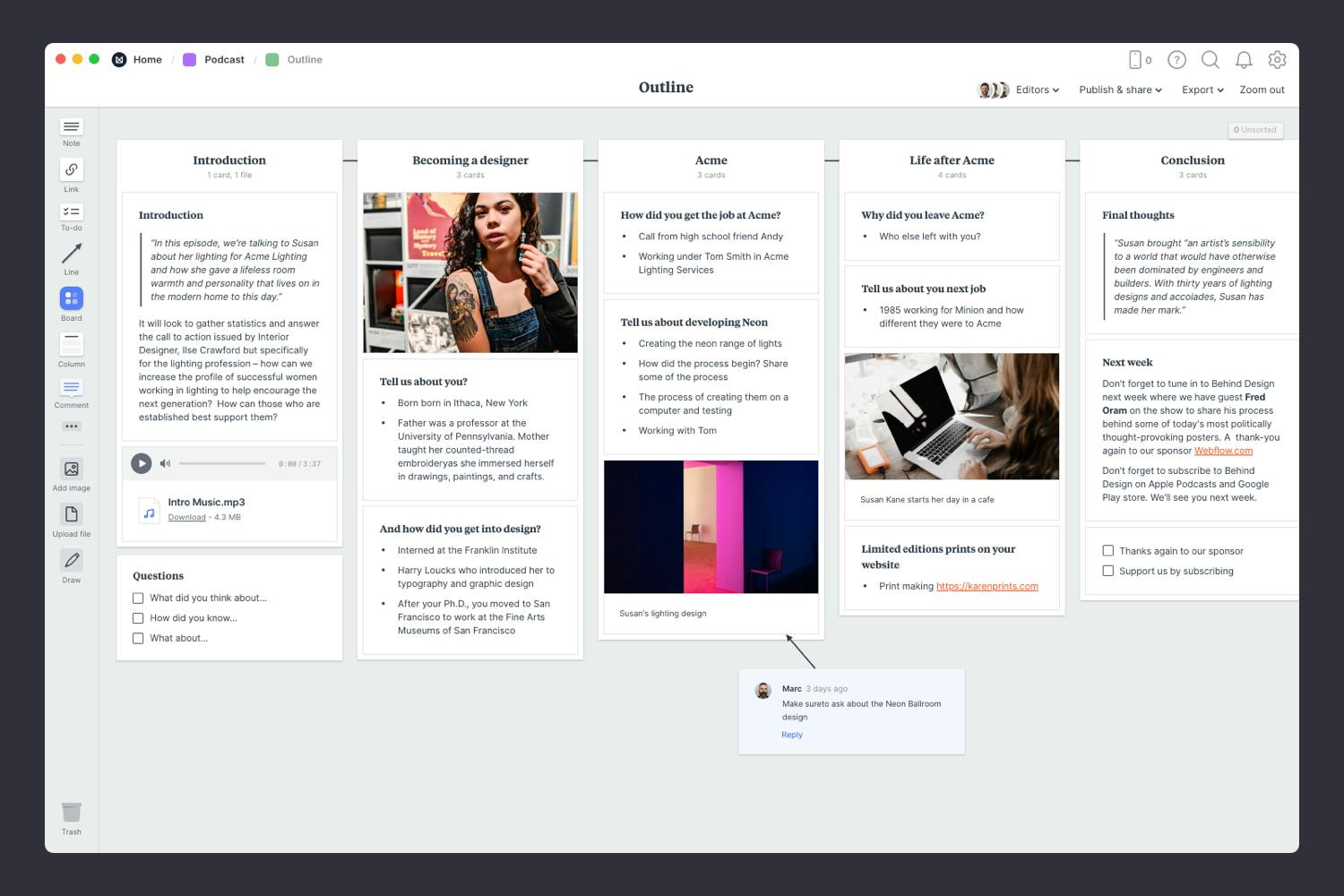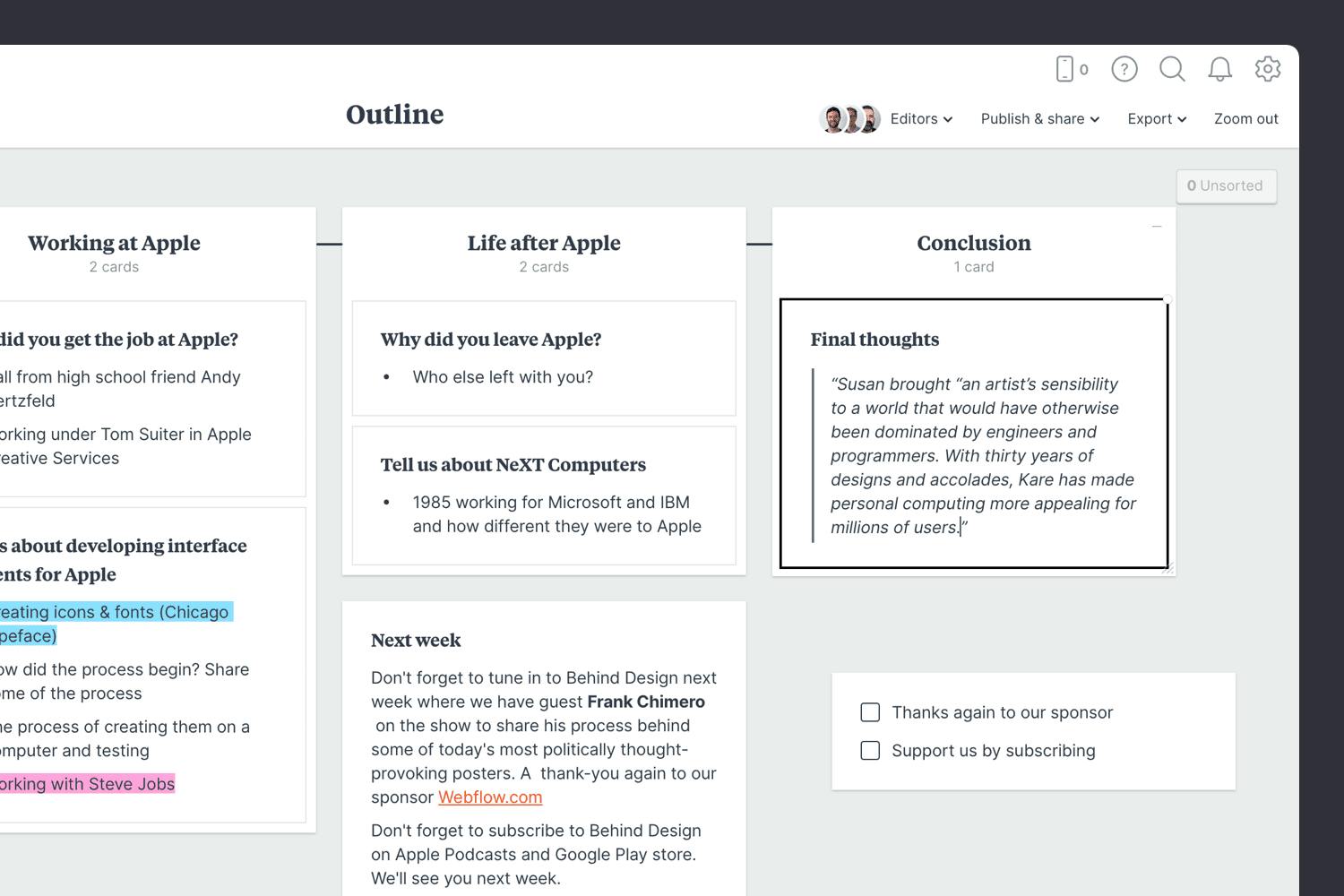Starting a new podcast episode can be an exciting but daunting moment. It's the beginning of the creative process—where your mind is overflowing with ideas, inspiration, and plans.
This template will help you organize everything in one place so you can begin recording with confidence. You'll brainstorm ideas, collect inspiration, research your topic, and create an outline for your episode. At the end you'll have a solid plan that will speed up the entire process and help you produce an engaging podcast.








